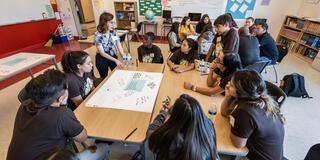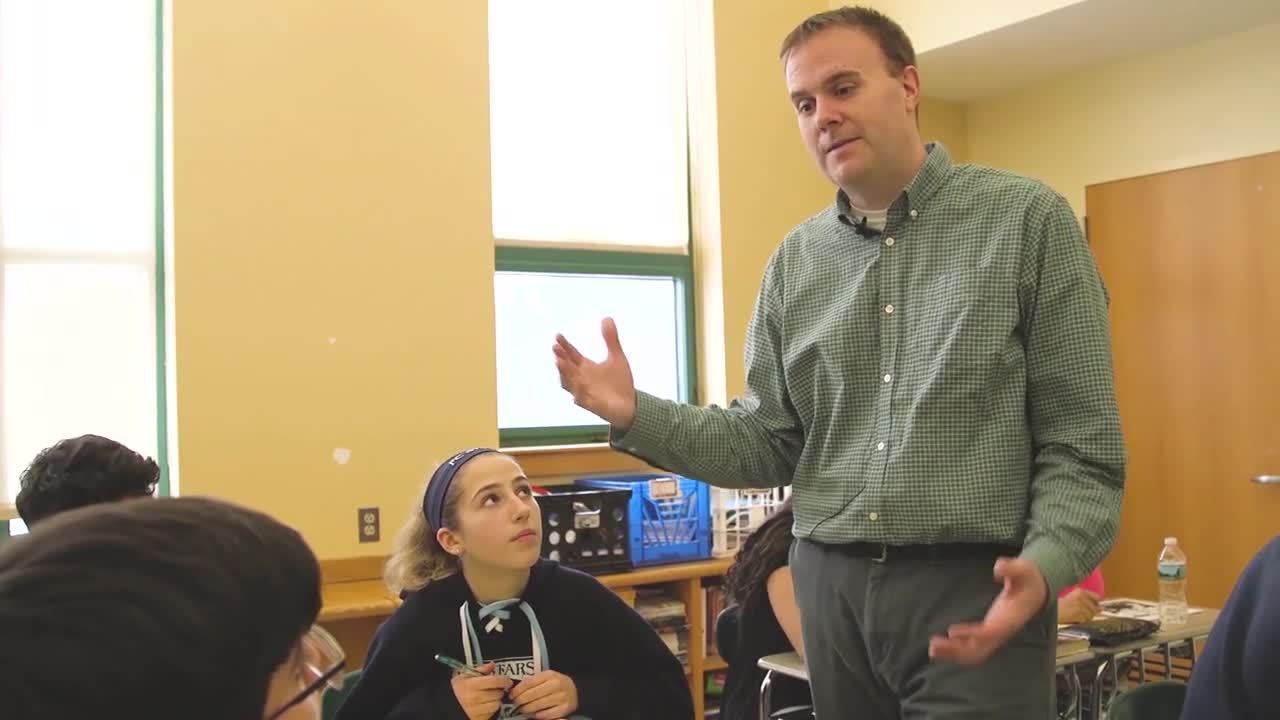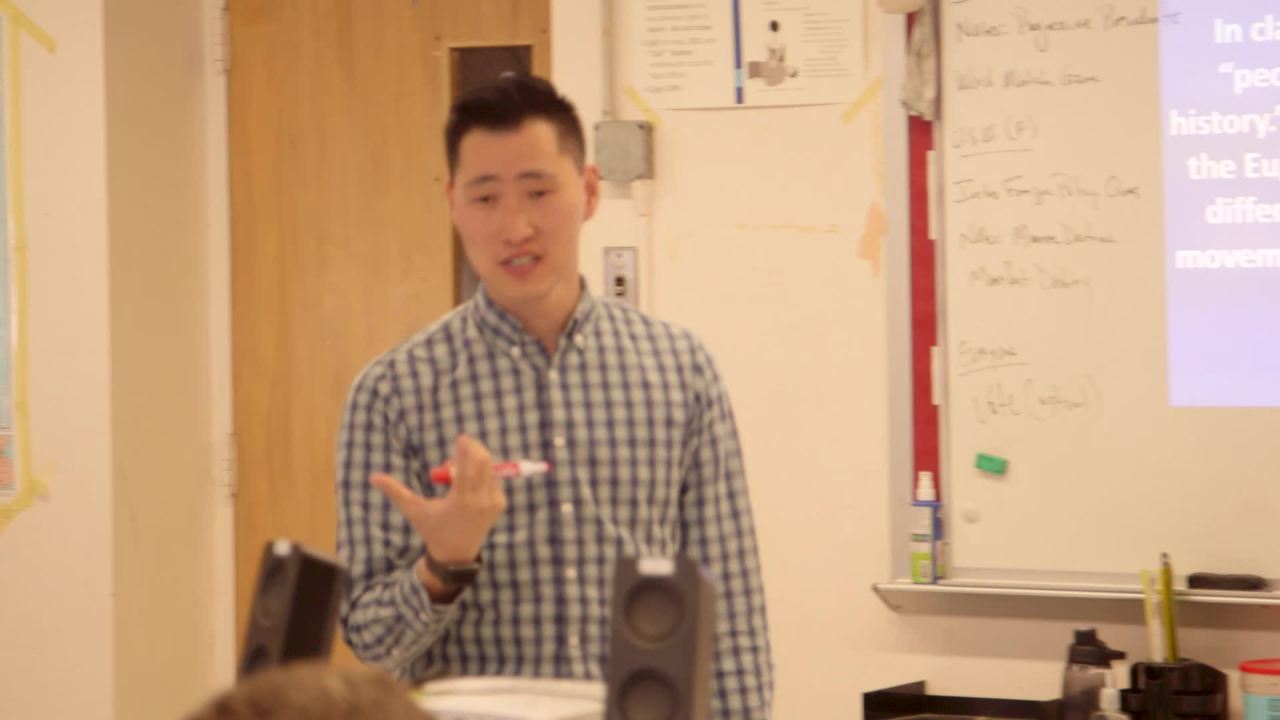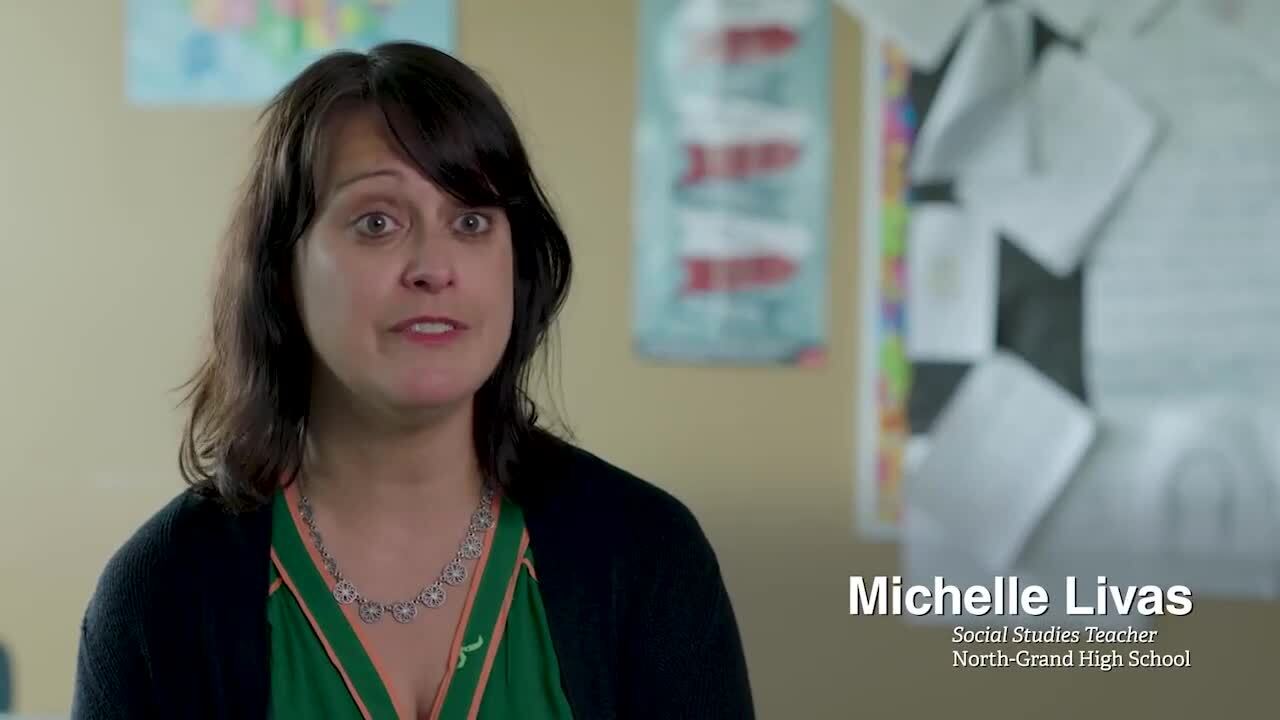All right, can you please make a line on either side of the aisle?
[CLASSROOM CHATTER]
So I need you to face a person. It doesn't matter who it is, because you're going to move around.
In today's lesson, I'm going to use a strategy that I call the line dance. And in some professional development materials it's called concentric circles. But the idea is that students are lined up or they're in a circular formation where they're speaking to just one person at a time.
Look at your person across the way and say, hey, how's it going?
Hi.
Hi.
[LAUGHTER]
We're going to do a line dance. What this means is for three minutes, you're going to discuss three questions.
And then when the allotted time is up, they will move and move on to a new partner for another brief discussion period.
So we're going to go this way. So somebody over there is going to come around to the other end. And you're going to shift so you're talking to a different person. And we're going to do question number 2 line dance. And then we're going to talk for three minutes, and you're going to talk about a different question.
Whether it's a line or a circle, it offers them a chance to share their opinions and ideas with at least two or three other people.
All right, the first question, if you guys can look up here, how does Adichie describe herself at the beginning of her talk? What words and phrases might she put on a chart? If she did that chart for herself, what might she say about herself? And let's-- hang on one second, because she's just going to grab her paper. 3, 2, 1, go!
Some people would be like, oh, my god, I'm really something. But she's basically being humble about her situation because she's like, oh, I made friends.
In terms of a discussion strategy, what I like is that students are one on one and there is a bit of eye contact, but not too much, and it's brief.
She's open-minded.
Yeah, she doesn't really-- I mean, she cares about herself.
While three minutes can feel like a very long time when you're uncomfortable, it's also not excruciatingly painful. And so if they can collaborate and come to some kind of a connection conversation, it's terrific. And if they're a student that isn't that comfortable speaking, they can make their way through it, and they know that, oh, cool, I can move in a minute and talk about something else.
--only portrayed as a border-crosser, this and that. And then she goes to Mexico, and now she sees these hardworking people that are fun like me. I'm just kidding. [GIGGLES]
And then as the teacher, they kind of forget about me after a while. So they're not thinking that I'm just there, looking at them and evaluating. I'm just kind of walking around. And they do usually forget that I'm there.
All right, we're going to do question two. So let's have you guys go that way. And you guys move down one. So now Amy's across from Mauricio, right? So, Daniel, who's your partner?
Skyler.
Yes, good. So make sure you are across from a new person, right? Let's do number 2. And the question is, later in the story, we learn how other people view her, Adichie. How do these views differ from how she describes herself? OK, go.
Just like how she thought of that other village, but-- yeah, that.
I feel like it kind of gives students opportunities to develop speaking skills without speaking in front of the entire class. So you and I just had a goofy conversation, but you're the only one that heard it. My teacher didn't even hear me.
OK, for her, her childhood and how she grew up is normal for her because she grew up with it. It's like if we grew up like, for example, here, around this neighborhood, and the way that we grew up, we view it as normal for us. It's our norm. And for other people, they view it differently. So they're like, oh, you're from there. So they make assumptions about where you're from. So that's basically how--
All right, can you guys please go back to your seats?
[SMACK]
Ooh!
When I use a strategy like this, I think I enjoy class way more than when I'm speaking because I actually get to see the students and hear them talk and be themselves. So it gives me some opportunities to get to know them better. I can circulate around the room. And I can hear who is maybe a stronger speaker than I realized, or who might be struggling actually, also.
And that's really important, to identify someone who you might overhear in the corner saying, I didn't understand that article, can you help me, where they may not come to me and ask that question. So I find it useful and helpful and beneficial in multiple ways.





